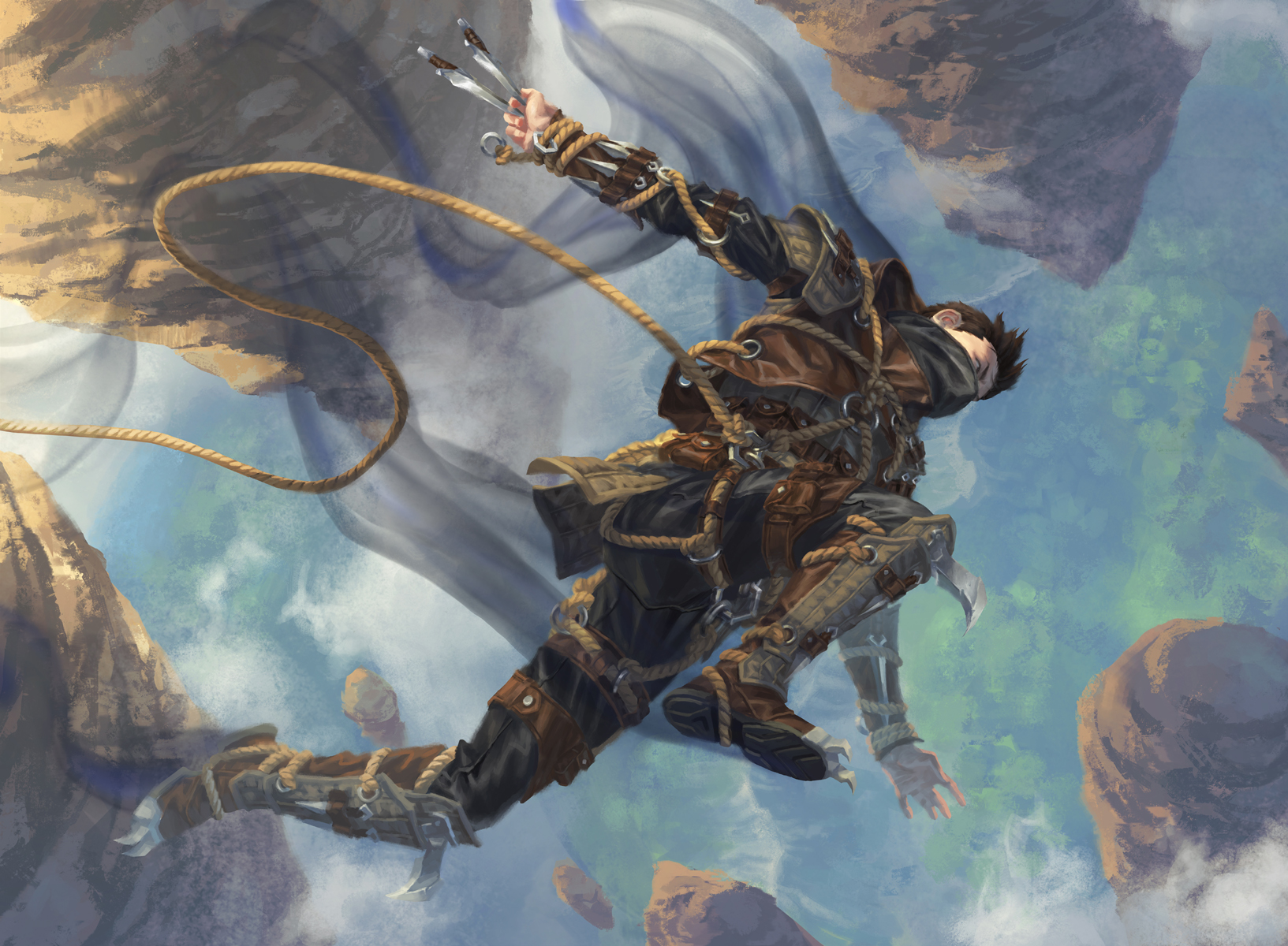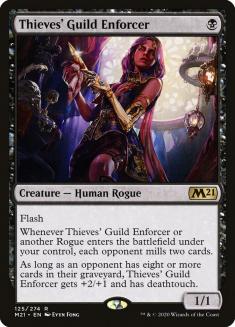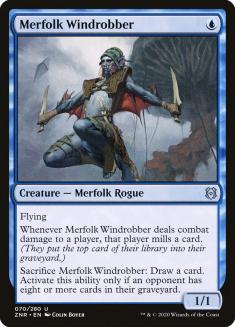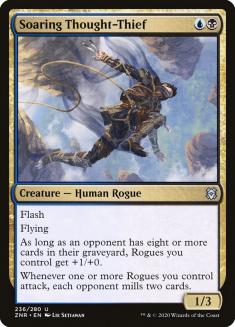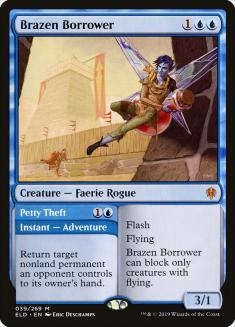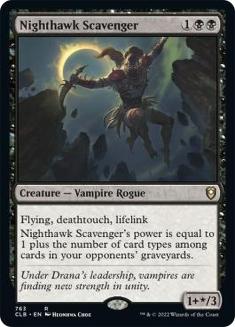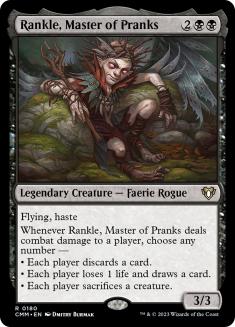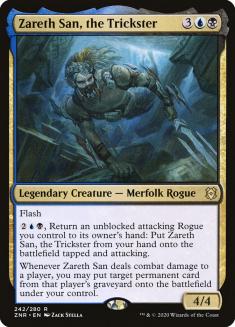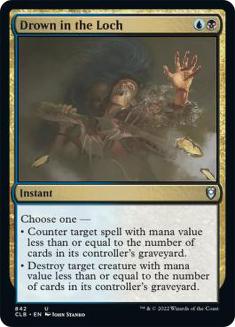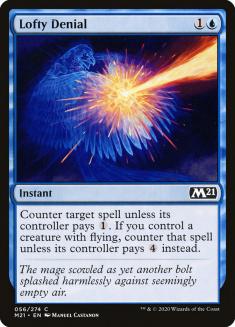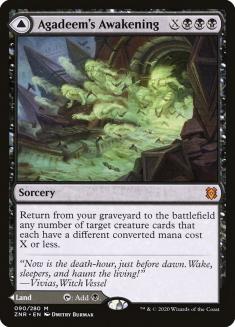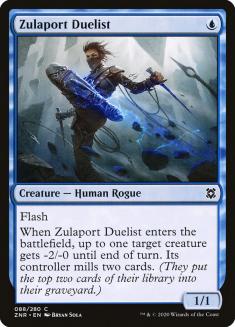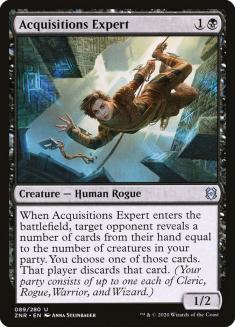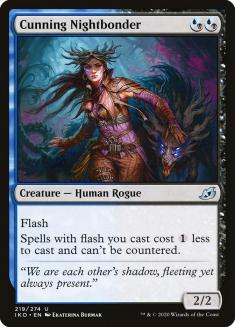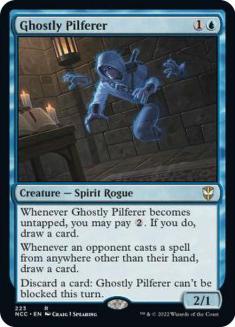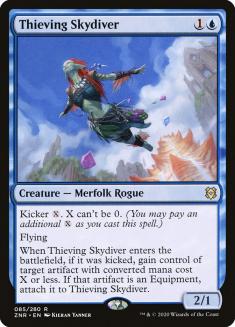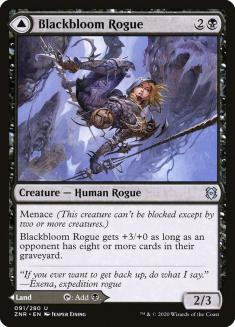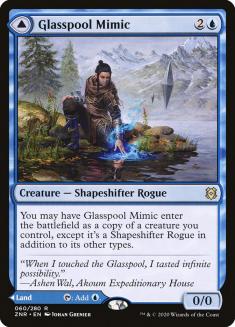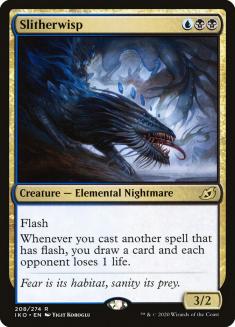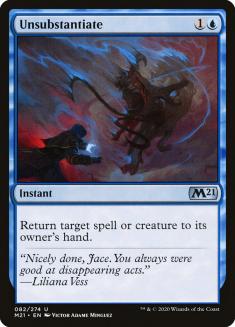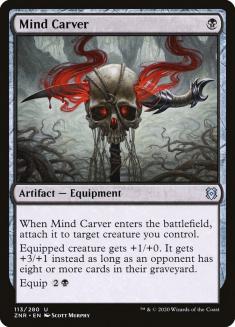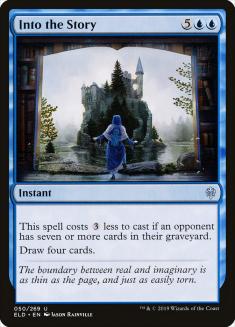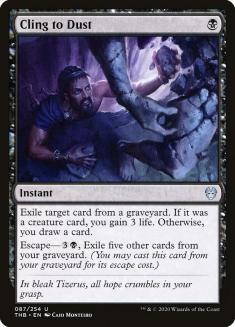Dimir Rogues is the most fun deck I’ve played in Standard in a long time. It feels a lot like playing Faeries in Lorwyn, which was one of my favorite decks ever. I love how it can sometimes play a control role, but most of the time you’re establishing a clock and using your limited answers to buy enough time go close the game before your opponent can use all their more powerful cards — the experience just creates a really exciting “Indiana Jones escaping a boulder” and winning just in time type of feeling for me.
I’m writing about a Standard deck immediately after (potentially) upcoming bans in Standard have been announced. The good news is, there’s almost no chance anything in this deck will get banned, and the better news is that Uro, Titan of Nature’s Wrath, one of the best cards against this deck, is fairly likely to go. That said, Zendikar Rising Standard could change quite a bit in the next week, so I’ll be sure to discuss which aspects of this deck might want to change as well.
Let’s get straight to the deck:
Creatures (28)
- 4 Rankle, Master of Pranks
- 4 Brazen Borrower
- 4 Thieves' Guild Enforcer
- 4 Merfolk Windrobber
- 4 Zareth San, the Trickster
- 4 Nighthawk Scavenger
- 4 Soaring Thought-Thief
Lands (21)
Spells (11)

These are the cards I’ve chosen to play in this archetype, but other players have made a lot of different choices, so I’d like to look more closely at these and some alternatives.
The Rogues
This is the one creature I play that doesn’t have flying, but it’s absolutely essential to any version of the archetype that tries to mill the opponent. It’s potentially possible to try to avoid milling the opponent to avoid enabling their escape cards, but I think more of the strength of the deck comes from cards that mill the opponent, so you just have to accept that your opponent is going to be able to escape things, and when playing against a deck with escape, you just have to try to tempo them out.
If you want to mill your opponent, this is a great enabler that hits hard and makes it much easier to clock your opponent — one of your best cards.
This is weak on its own, but it plays extremely well with many cards in the deck. It builds a great air force with Soaring Thought-Thief; it’s a cheap creature to sacrifice if you want to trade bodies with Rankle; it’s evasive so it’s ideal to pair with Zareth San, the Trickster; it mills to enable Drown in the Loch; it flies to enable Lofty Denial; and it can sacrifice itself to make sure that you have a one-mana creature to return with Agadeem’s Awakening. This isn’t the kind of card that pulls me to play this deck, but it does its job well enough.
This is the card that pulls me to play this deck. Flash makes it play well with counterspells, while mill enables Drown in the Loch and other synergies. Flying contributes to the skies gameplan and Lofty Denial, and adding power to a team of flyers allows me to close the game out quickly enough to make up for the deck’s lack of card advantage. This is the best card in the deck.
Hits pretty hard, has flash and flying, offers some interaction. A strong card in general that’s stronger in this kind of deck, and further supported by explicit tribal synergies.
A three-mana creature without flash, Nighthawk Scavenger can definitely feel a little clunky, but it usually has four to six power with flying and lifelink, so the payoff is definitely there. This is the card that best allows you to beat other aggressive decks, since they basically can’t win if they let it live.
I think most people play fewer than four of these, which is understandable. It’s awkward to draw several of them. Still, I think it’s really important to ending the game quickly, which is my top priority while the format is dominated by Uro, Titan of Nature’s Wrath. Making both players draw cards is fantastic when your curve is much lower than the opponents, especially when you have two-mana counterspells and your opponent needs to resolve more expensive cards to save themselves. I’d consider cutting at most one Rankle for now, but could cut more or cut it entirely depending on how bans change the format.
This is probably the next-best card after Soaring Thought-Thief. It’s very easy to sneak in and everyone’s deck has fantastic permanents you get to put onto the battlefield with Zareth San. I’ve taken Ugin, the Spirit Dragon; Shark Typhoon; Terror of the Peaks; and all sorts of other goodies, which also makes this card extremely fun to play. Like Rankle, it can be awkward to draw three of these, but these big, game-swinging four-drops are crucial in a deck with a lot of small creatures that needs to focus on ending the game.
The Supporting Spells
The other big payoff for this strategy. Most of the time, this kills or counters anything for two mana.
It’s not perfect, but it’s exactly what you want for this strategy and very close to a hard counter in most games.
I’m directly replacing Swamps with these and almost grouped these with the lands. In most matches in Zendikar Rising Standard at this time, your opponent’s life total matters and yours doesn’t, and as a synergistic tribal deck that can sometimes play longer games, this often becomes your most powerful spell, sometimes the only thing that can save you. I started with two and went up to three. I don’t think I want the fourth, but it’s more likely than cutting back to two at this point.
The Lands
I’m a huge fan of modal double-faced cards (DFCs), but not in this deck. This deck has a low, smooth curve and it’s trying to get under the opponent, which means using all of its mana early is essential, since it really doesn’t have the tools to play from the back foot.
On the other hand, the casting costs are really demanding. I’m trying to balance Brazen Borrower with Nighthawk Scavenger and Agadeem’s Awakening in a deck with very few colorless costs. That means we need lands that can tap for blue or black mana. That means all the tapped lands I can afford to play are used on Temple of Deceit and Zagoth Triome. If I were to play any additional DFCs, they’d have to replace spells from my current list, not lands.
The Castles I’m currently playing are on a trial run. Castle Locthwain in particular offers something the deck really wants, but I’m definitely worried about how often it will enter the battlefield tapped. I think the possible value it offers is a lot higher than a DFC though.
The Creatures I’m Not Playing
I played Zulaport Duelist as a sideboard card and it was sometimes very good against Mono-Red Aggro, but it wasn’t even good against other aggro decks often enough. A 1/1 without flying just isn’t enough of a card to consider playing this.
Acquisitions Expert isn’t in line with our gameplan in any way. We’re trying to win before the opponent can use their cards.
Flying is essential and the cost reduction Cunning Nightbonder offers only really helps Brazen Borrower. Hard pass.
Ghostly Pilferer kind of does things I’m interested in, but I think it’s pretty clearly worse than the other options.
I’ve seen almost no artifacts in my games of Zendikar Rising Standard. If Stonecoil Serpent were to see a lot of play, I could get into this.
Blackbloom Rogue isn’t totally out of the question — it does hit hard and has evasion — but being a DFC has low value here because of how bad a land that enters the battlefield tapped that only adds black mana is compared to my other options, which means I’m basically just comparing the front half of this to the front half of Nighthawk Scavenger, and Scavenger easily wins.
This is basically the same situation, but also, my good creatures are legendary.
I’ve seen a lot of Rogues lists that use Slitherwisp, but I don’t think it’s correct in the current format. There are too many Bonecrusher Giants, but even if we ignore that and assume that this will live, the fact that it’s missing evasion means it can rarely contribute to our aggressive plan, and if this is just a three-mana enchantment that draws cards and slowly pings the opponent, it’s just too slow for out purposes. If everything’s going perfectly and you can keep them off creatures and keep this on the battlefield I guess it’s pretty good, but I’m just not buying that that happens much.
The Spells I’m Not Playing
Obviously, there are a ton of possible spells I could use. The important thing here is that I’m not playing any creature removal that can’t interact with spells on the stack, and I believe that’s correct. Yes, sometimes it would be nice to kill Lotus Cobra, but honestly, if I have to let them have it, that’s not so bad; I just have to focus on countering the things they play with it. They’re still generally just casting one spell per turn.
Every deck in Zendikar Rising Standard right now needs to be built to have the best chance it can against Omnath, and killing their creatures just isn’t a reasonable way to fight them. You need to attack and stop them from resolving spells. That means all removal is relegated to the sideboard.
Given that every removal spell is off the table, the other considerations that I think are reasonable are:
Currently, I’m playing against enough red, black, and Rakdos that I think trying to play Mystical Dispute maindeck would hurt, and I don’t think it’s a big enough upgrade where it’s good to justify it, but it’s the only card I sideboard in against Omnath, so I could understand just playing it maindeck if you’re confident the field is almost all Omnath decks.
Unsubstantiate is a much worse Drown in the Loch, but when you’re just trying to tempo your opponent out it gets the job done. I could see trying this in small numbers.
To be honest I just forgot about Mind Carver, despite including it in my Rogues list before Zendikar Rising released. I haven’t played with it, but I think I’m going to try playing a pair of them over a Rankle and either a Nighthawk Scavenger or a Zareth.
I like what it offers both in closing speed and potential grinding.
The Sideboard
I started with a normal Dimir sideboard with various tuning options —some removal, some counterspells, some discard — but lately I’ve been trying a more transformational approach. Against Four-Color Ramp I just cut Nighthawk Scavengers for Mystical Disputes, but against most other decks, I morph into a control deck, bringing in removal and Into the Story and cutting Rankle and some other creatures.
I like how that plays; control decks get better at answering creatures after sideboarding, so you don’t want to invest in expensive creatures, and your aggressive gameplan is likely slower than an opposing aggro deck’s, so you want to change gears and become more controlling against them, so this plan allows adjusting appropriately for both.
I didn’t have Cling to Dust at first because I don’t think it’s a realistic way to fight Uro because you generally just mill the opponent to more of them and you don’t win that game by throwing away cards, but I found that it’s really important in the mirror and against Rakdos Escape decks. I think the Rakdos Escape decks are a horrible matchup either way, but it could help there; further, it’s important in the mirror to be able to get rid of your graveyard and build card advantage and they can’t really fight it unless they have their own Cling to Dust. Whether Cling to Dust is worth a spot will really just depend on how popular the mirror is.
Gameplay
You’re a tempo deck, so you need to establish some kind of clock. In general, you really want to start with a one or two-mana creature, but if you’re on the play, you can maybe keep a hand with a Brazen Borrower as your Turn 2 and Turn 3 play or a Lofty Denial and a Nighthawk Scavenger, but in general, you really want to start with a creature, since your one- and two-cost creatures are all enablers for the rest of your deck and gameplan.
Against Four-Color Ramp, you’re not that scared of anything they can resolve for less than four mana, so you need to use those early turns when you can tap out to establish a clock. After that, if you have a choice between tapping out and leaving a counterspell up while they could potentially resolve a four-plus-mana spell, you generally want to leave up the mana, but if you don’t have any pressure going you might have to slam something and hope for the best, but you’re probably going to lose that game.
Sequencing your early Rogues to maximize milling your opponent is nice, but it’s generally more important to optimize your mana usage and get to the point where you’ll have mana available to start playing your reactive game.
In most spots, you can’t try to strand Uro in their graveyard, you just need to jam and accept that you’ve signed up for trading your counterspells for their four mana while you attack them.
Sideboarding
A few quick notes:
- I’ve never cut Thieves’ Guild Enforcer, Soaring Thought-Thief, Drown in the Loch, or Agadeem’s Awakening. Anything else is fair game.
- Merfolk Windrobber is low-impact, so you can cut it pretty safely. I think it’s a solid way of establishing a cheap clock when I’m trying to be the aggressor in some capacity, but I’m looking to cut it when my opponent’s attacking me.
- Lofty Denial is similarly good when I expect to be on the front foot and bad when I expect to be on the back foot. These cards will often leave together.
- It’s rare that you want to cut Brazen Borrower, but sometimes I find myself trimming some, generally against aggro decks.
- Nighthawk Scavenger is essential when you’re being attacked, but you can cut it when you need to focus more on your counterspells than your creatures.
- Rankle is a good Game 1 card and good against ramp decks, but common to sideboard out in other matchups.
- Zareth San can be trimmed when you’re trimming creatures, but I’ve never gone below two.
Going Rogue
We’re very early in Zendikar Rising Standard and this deck is an ongoing puzzle for me, but in what looks like an absolutely miserable Standard format overall, Dimir Rogues has been enough fun to hold my attention, which is high praise — I haven’t even played out my second Zendikar Rising draft yet.

